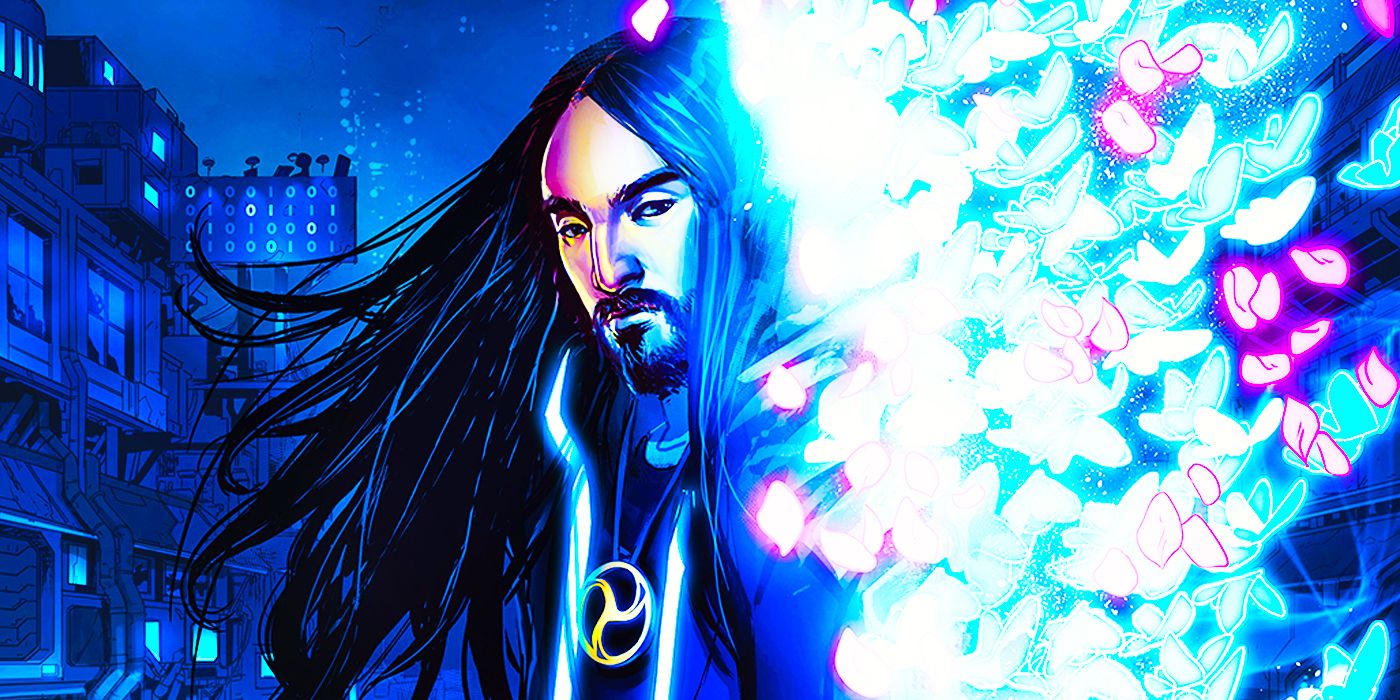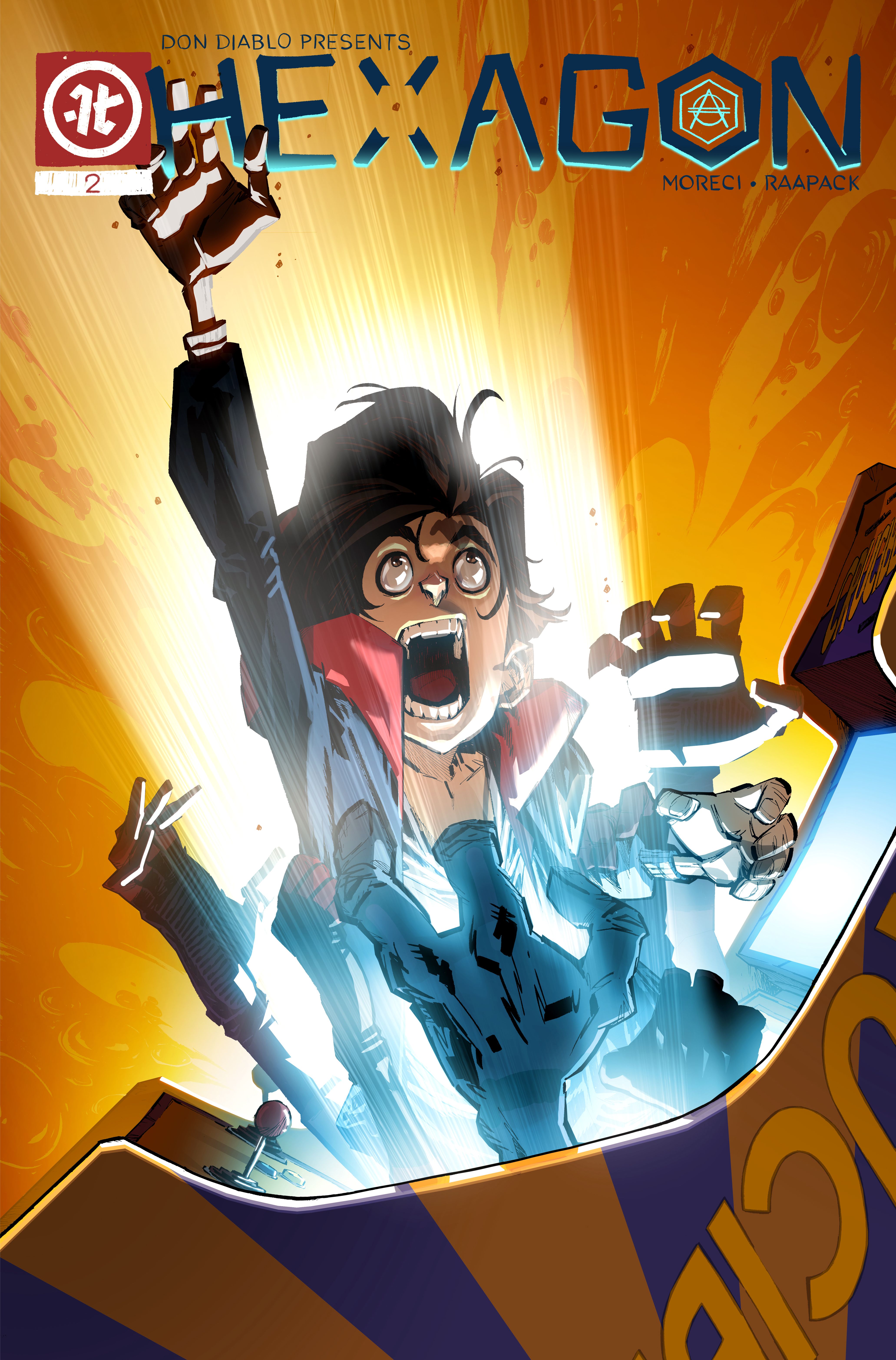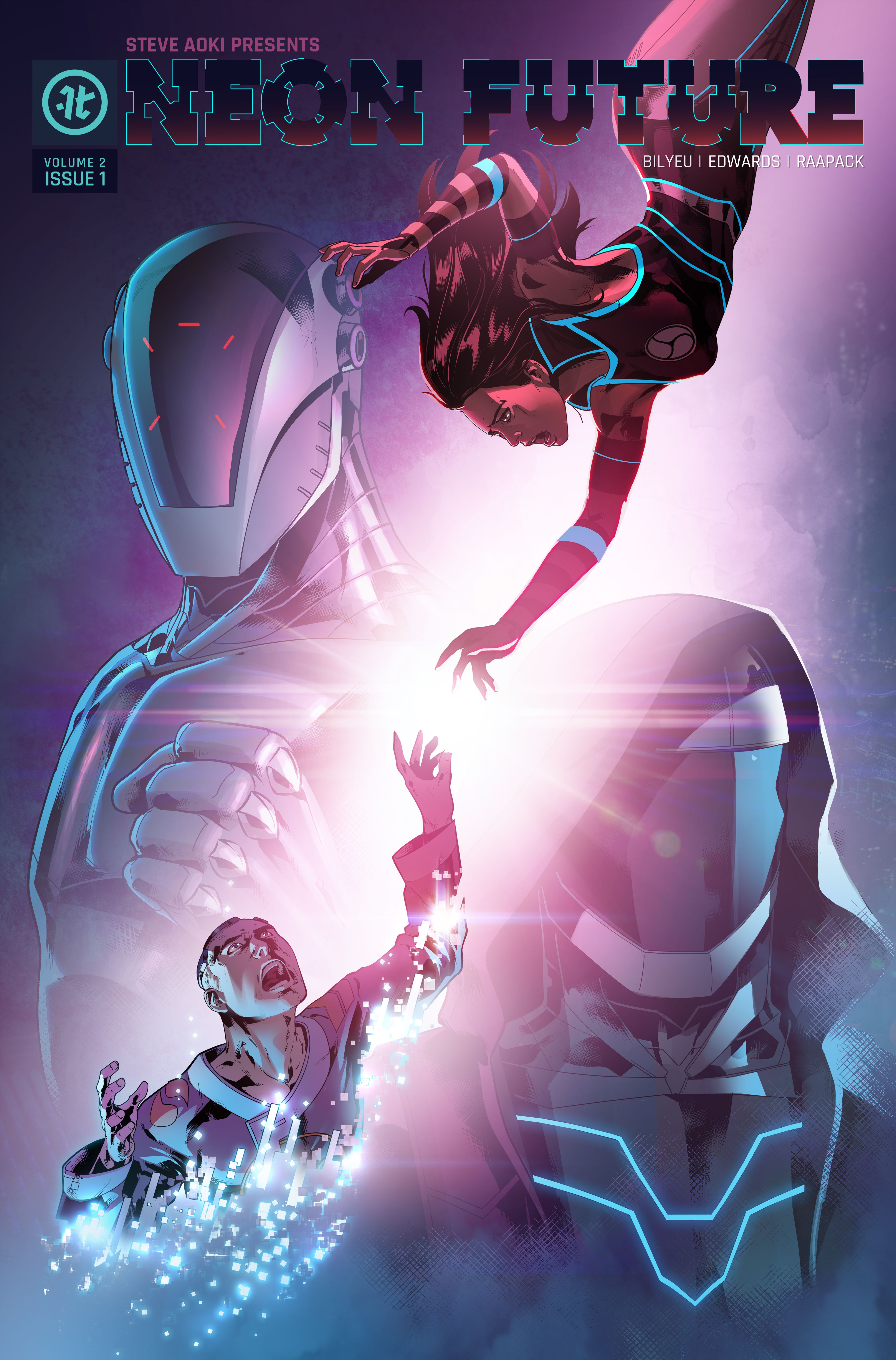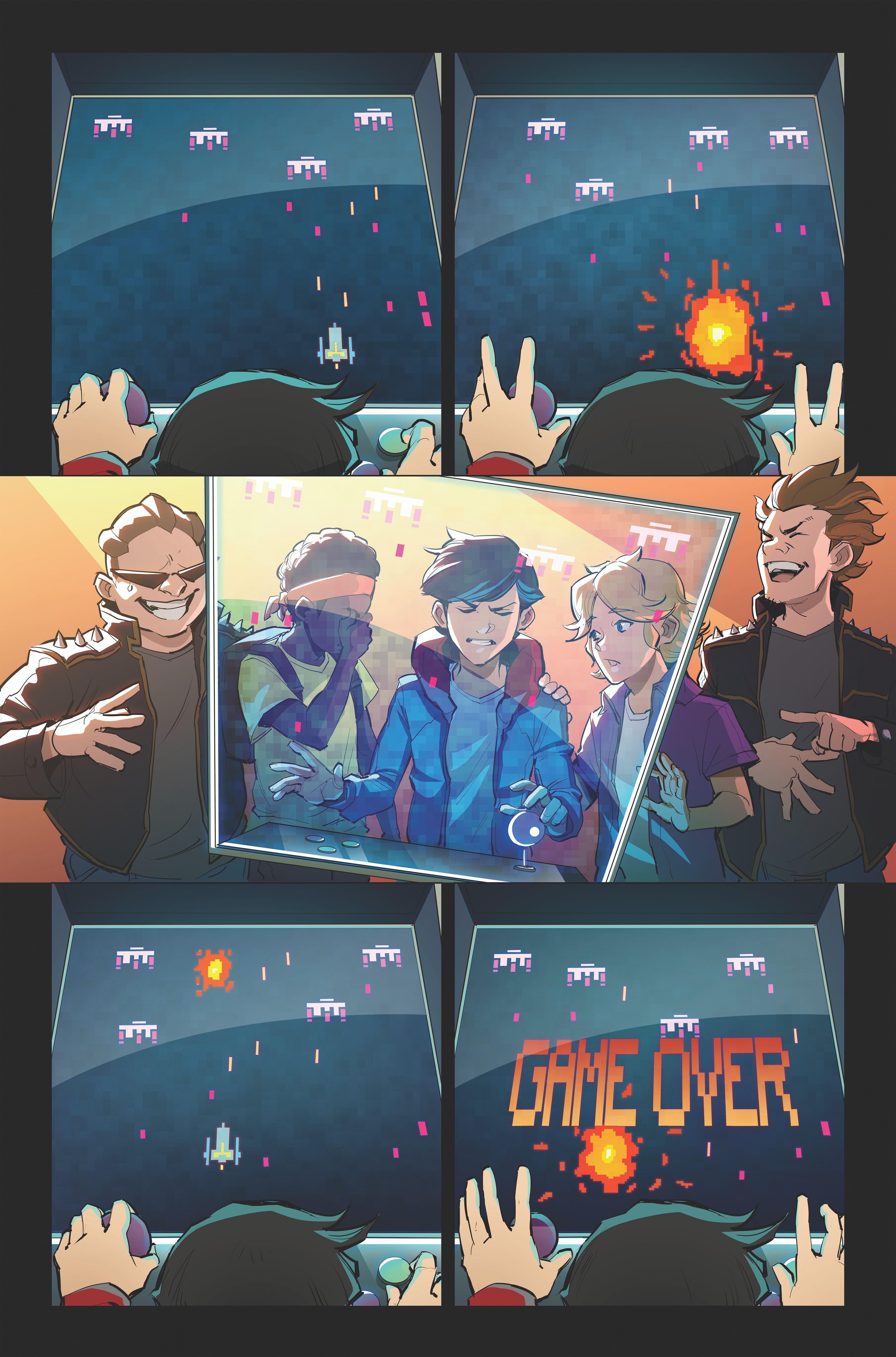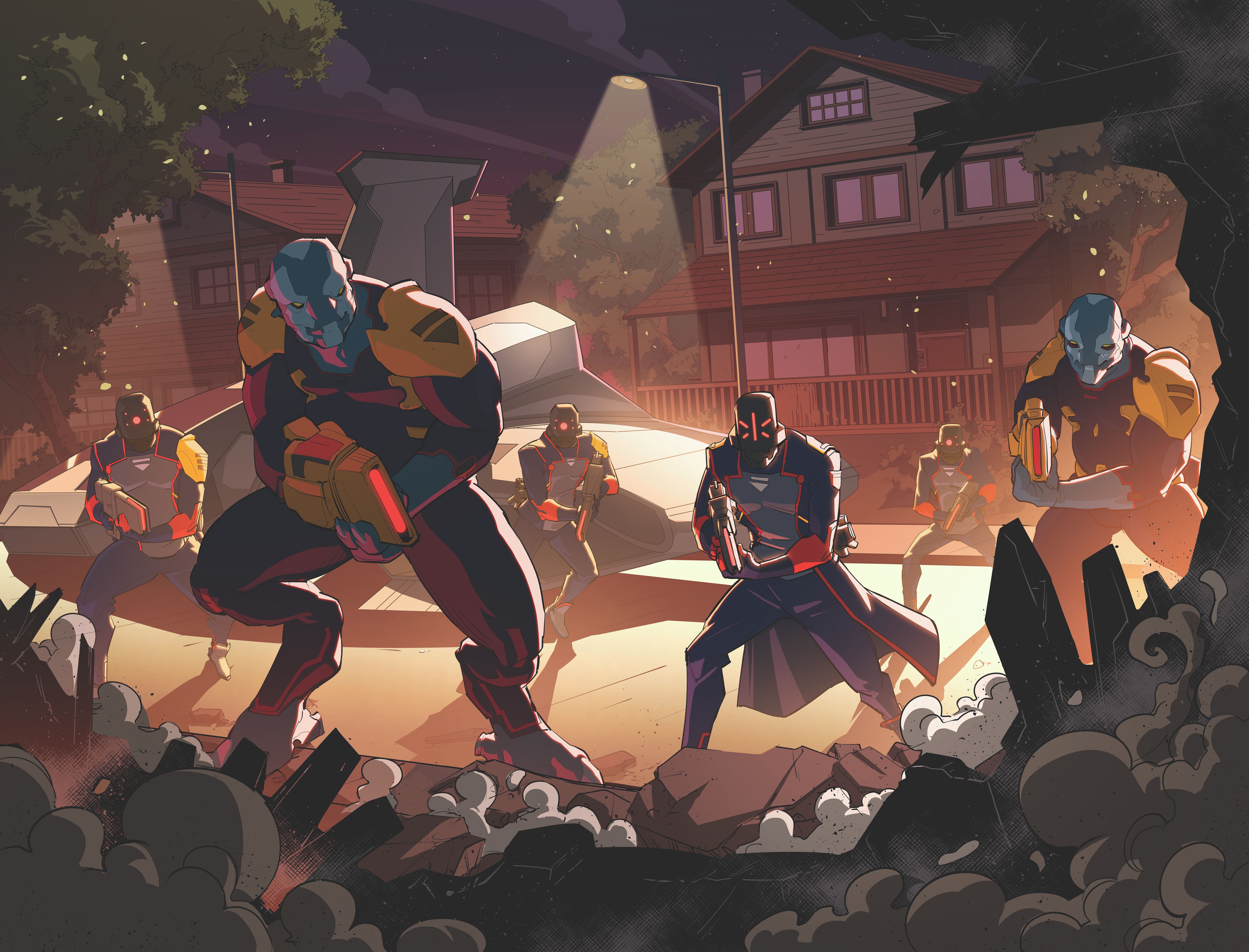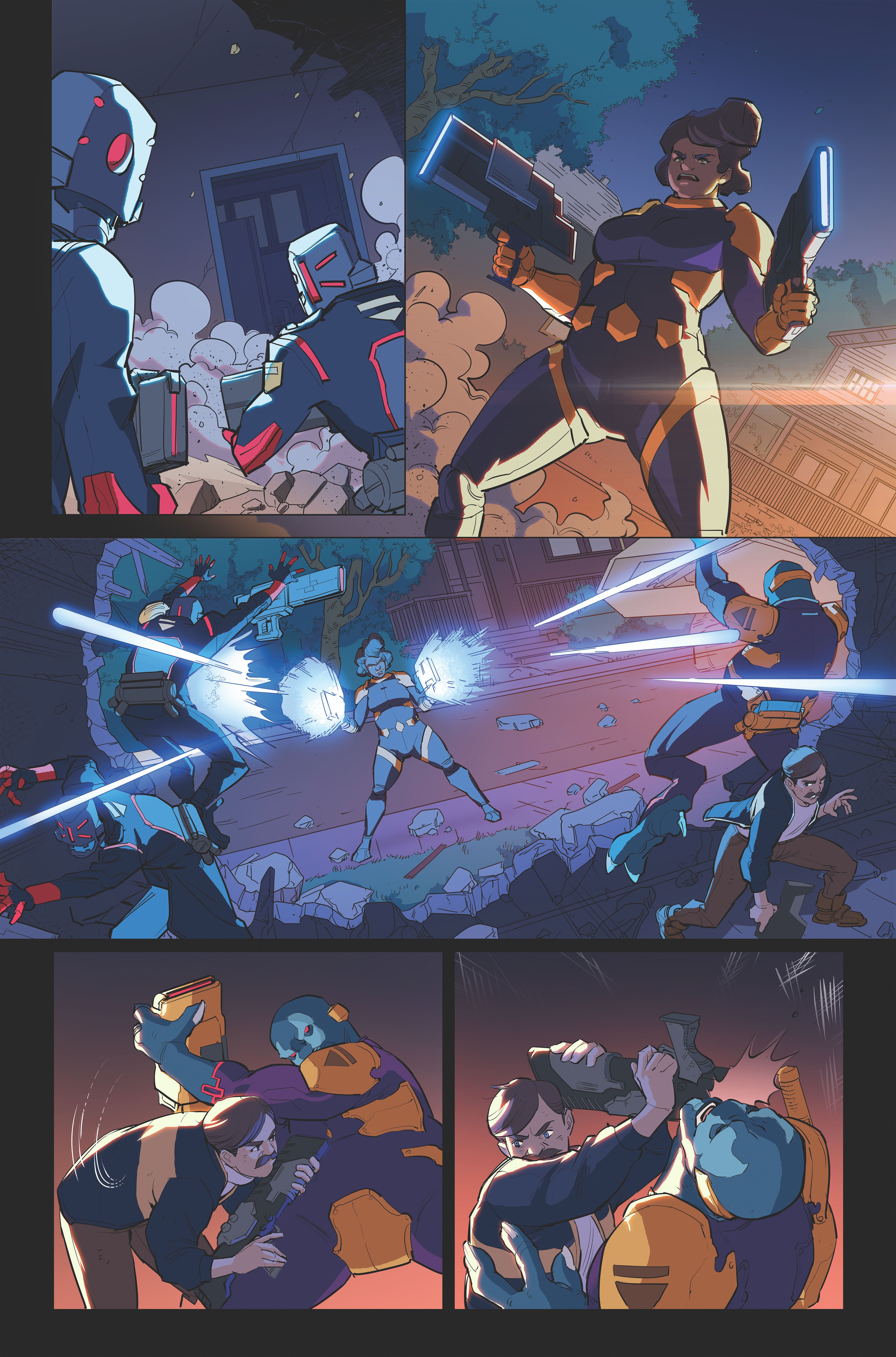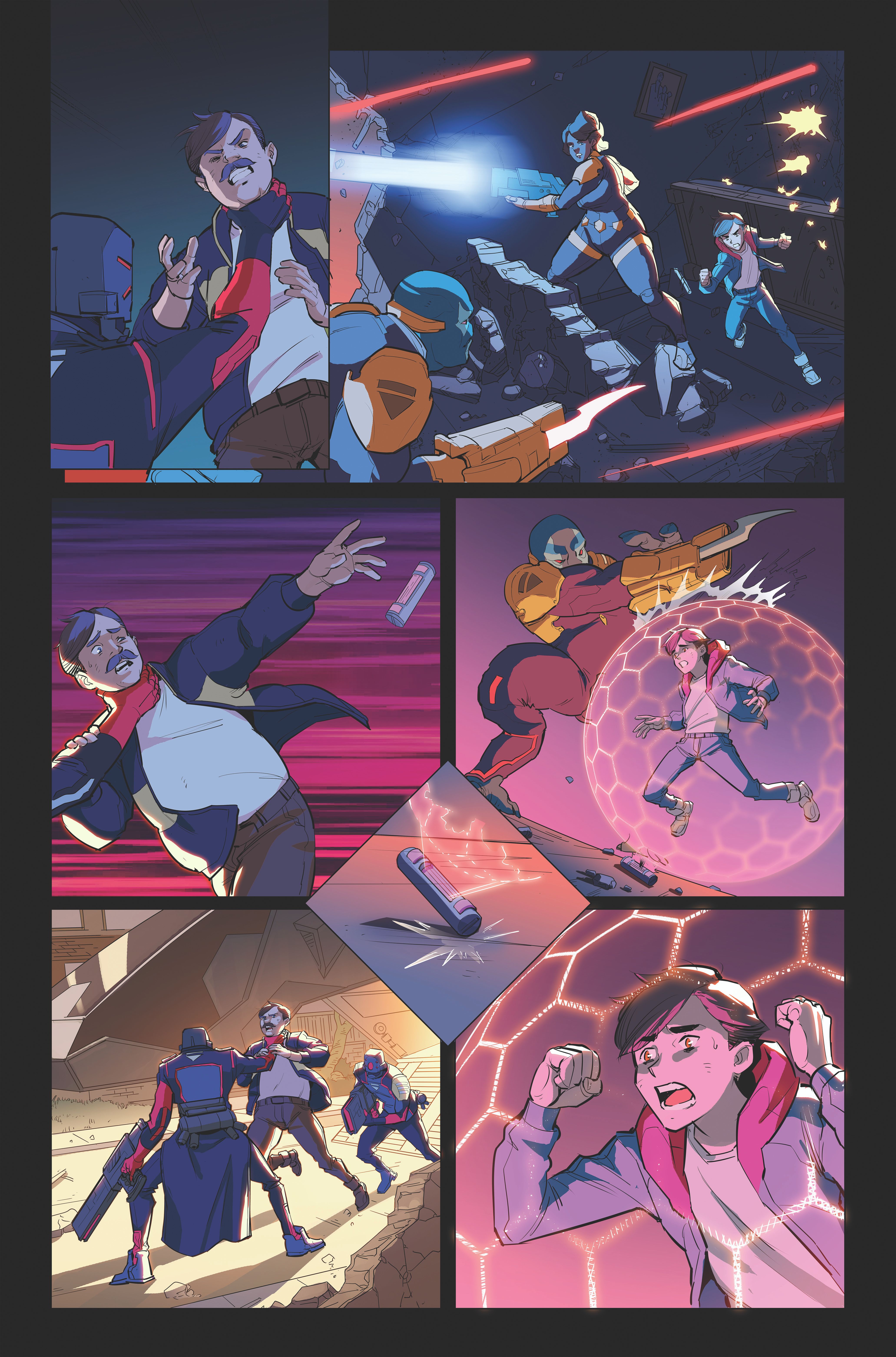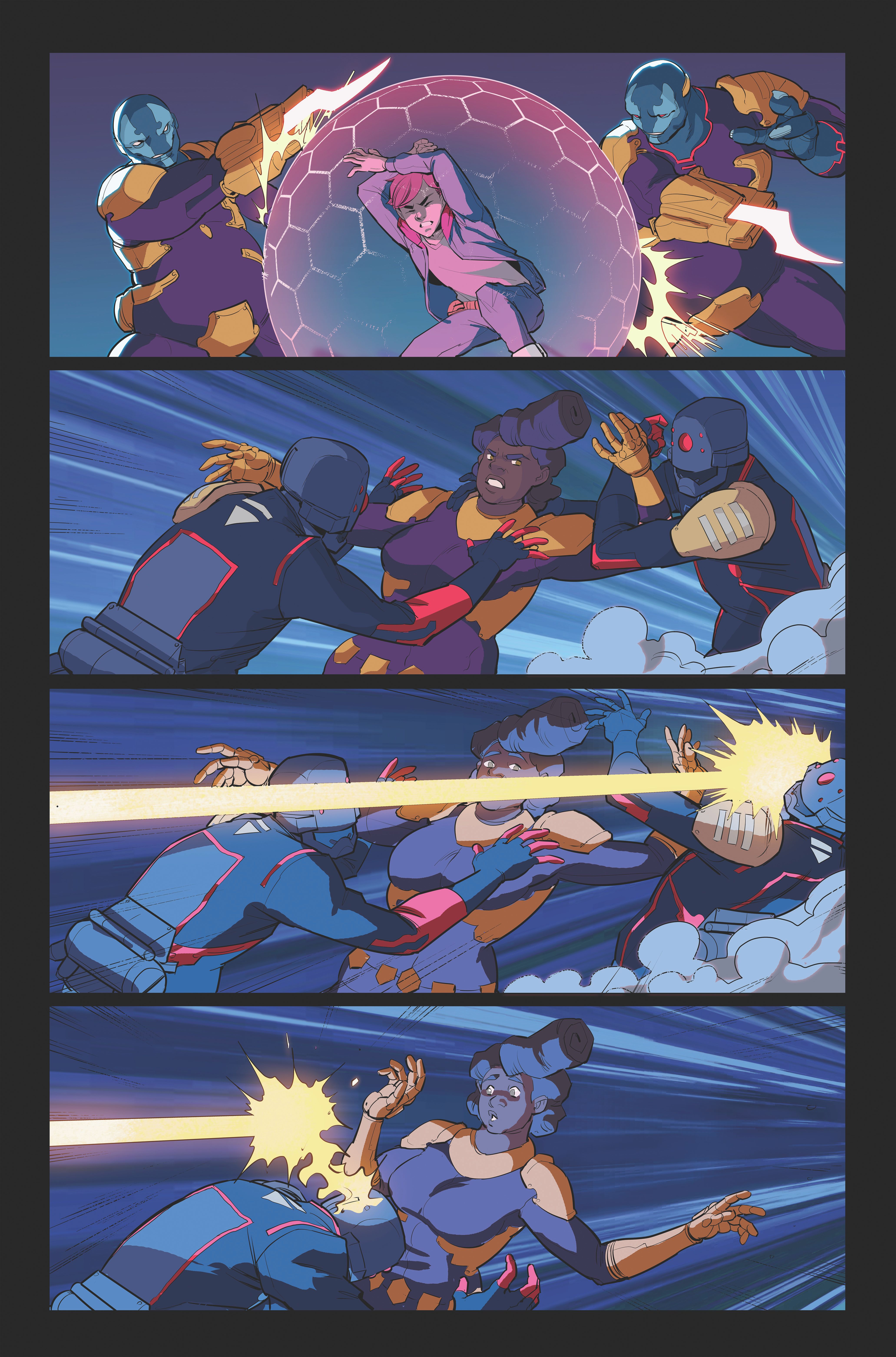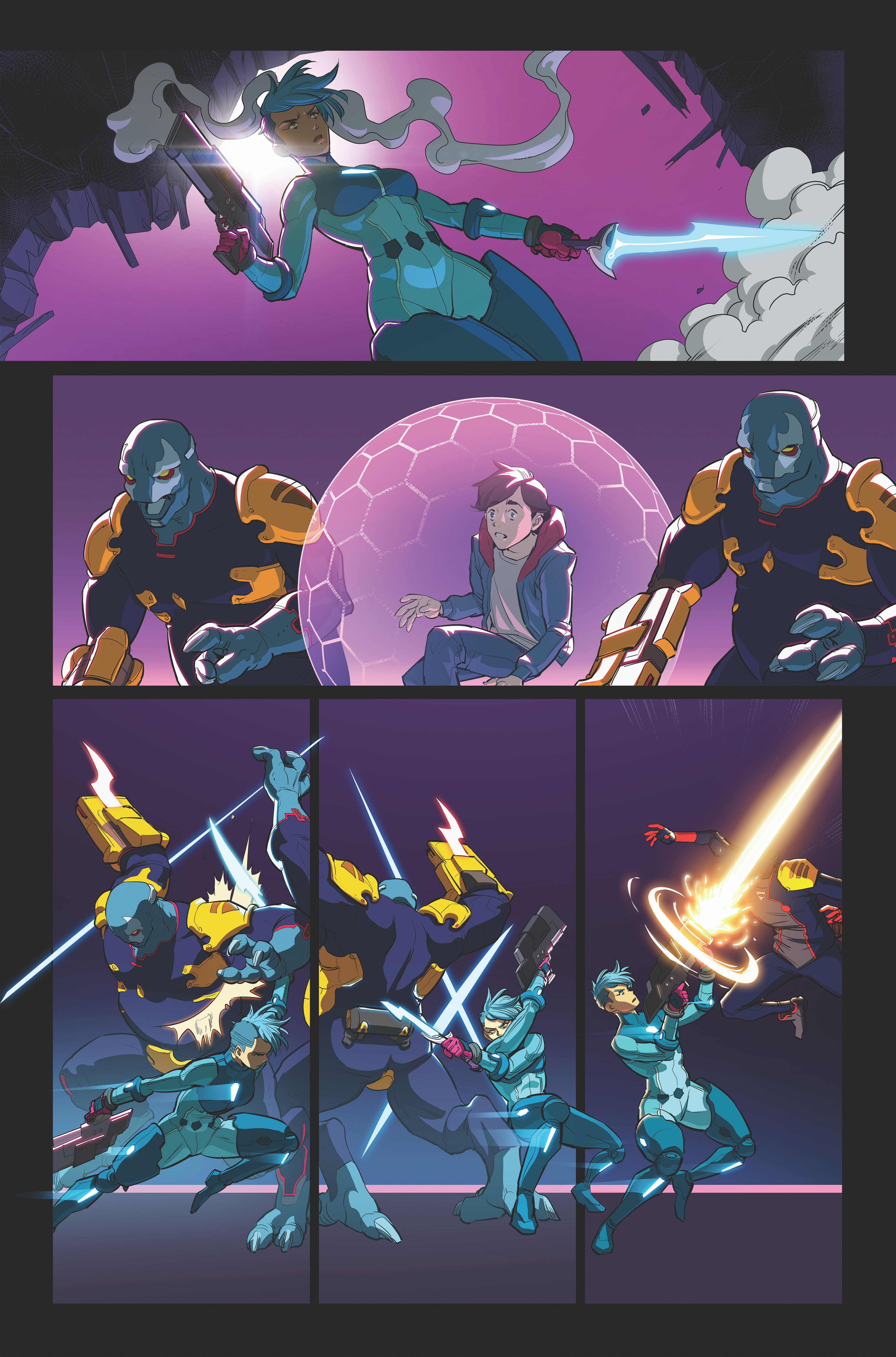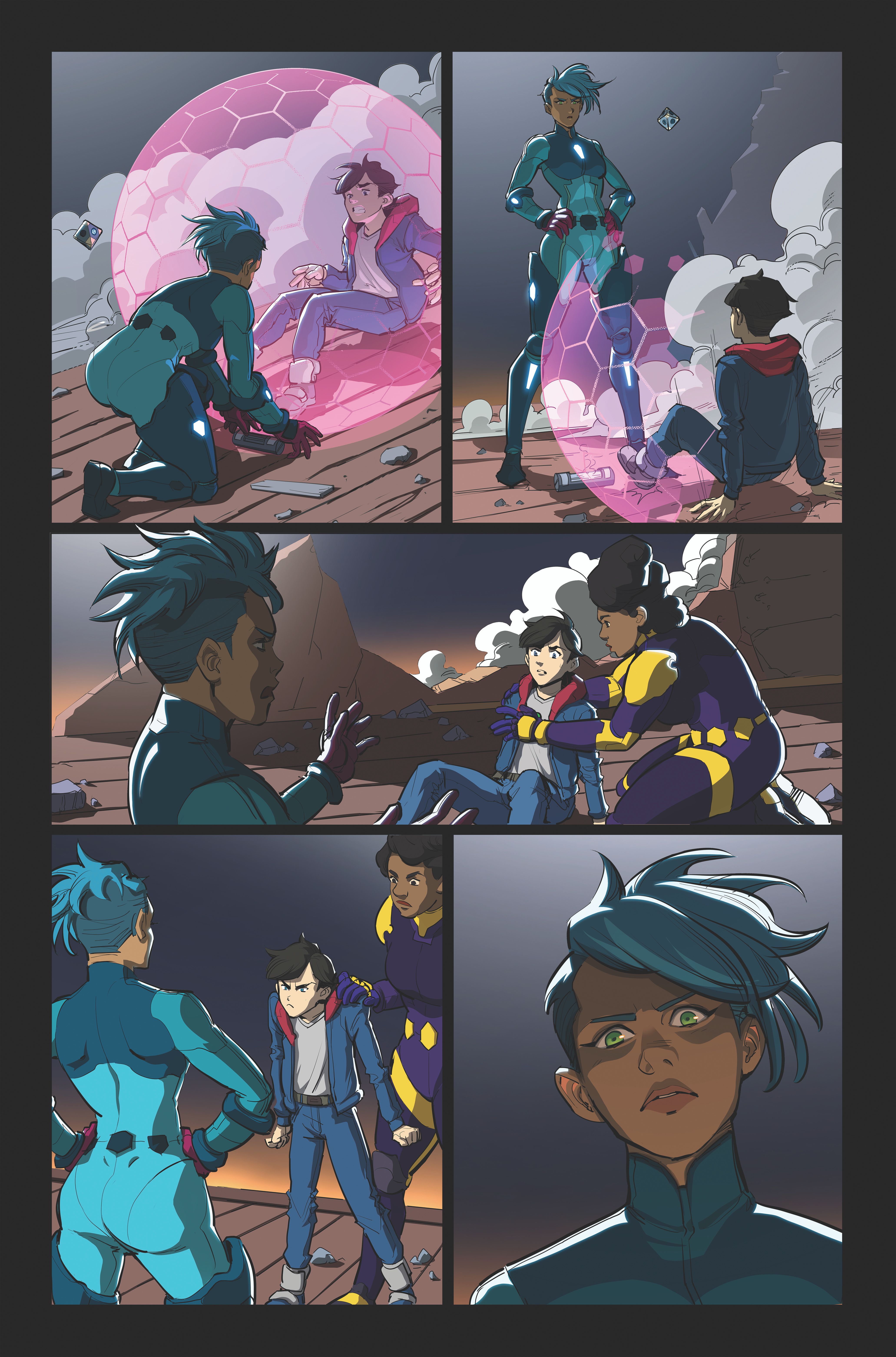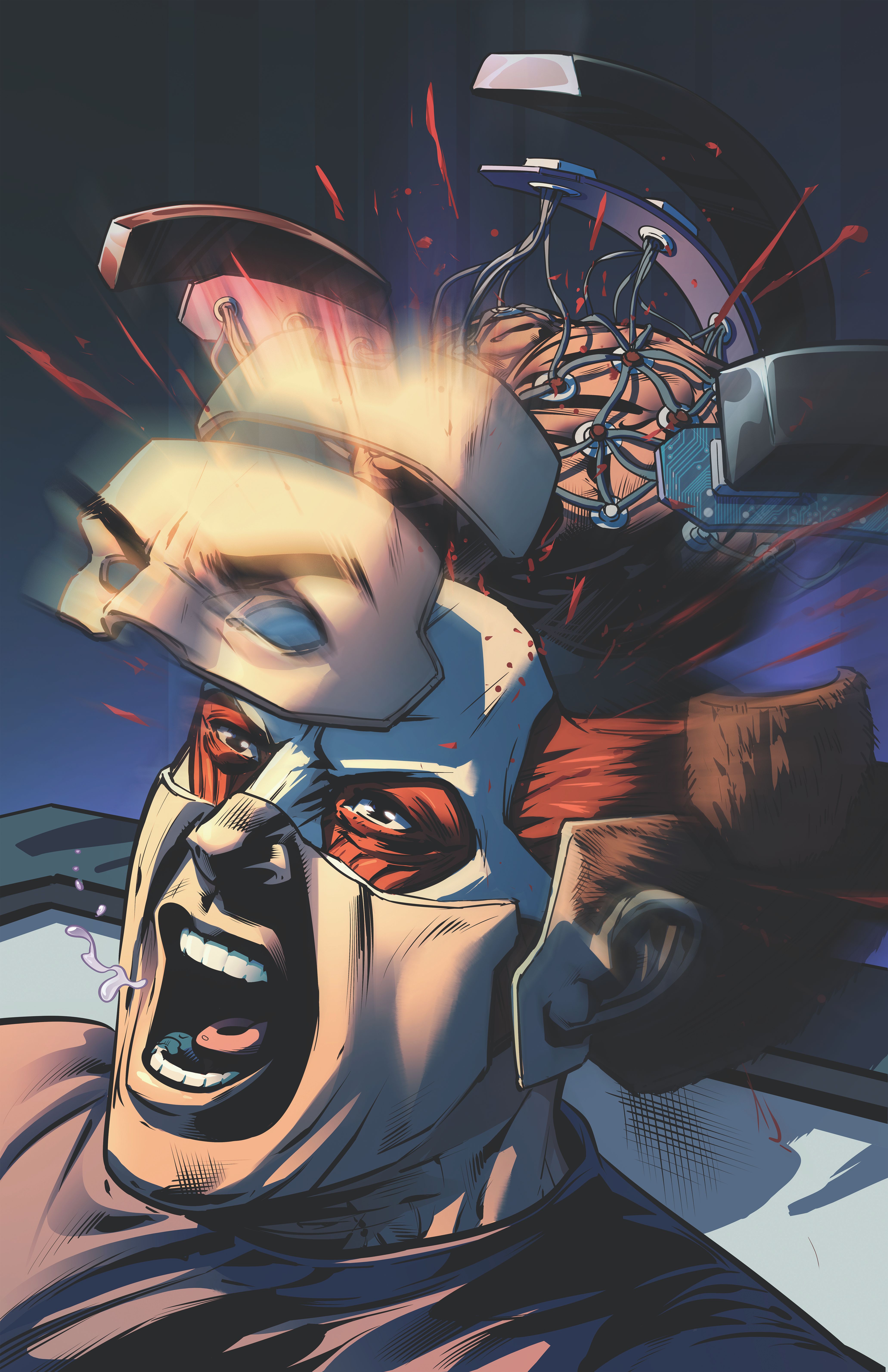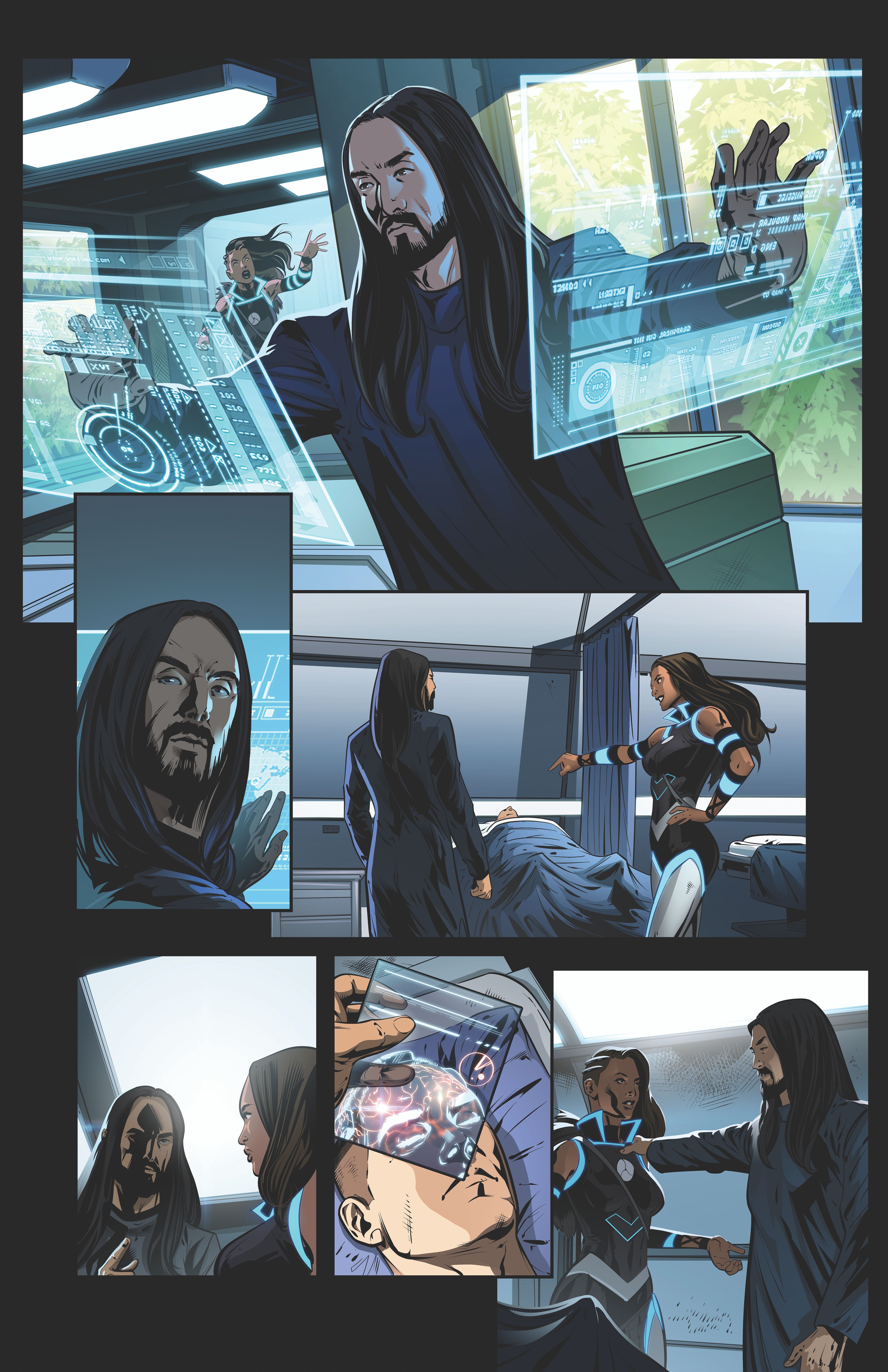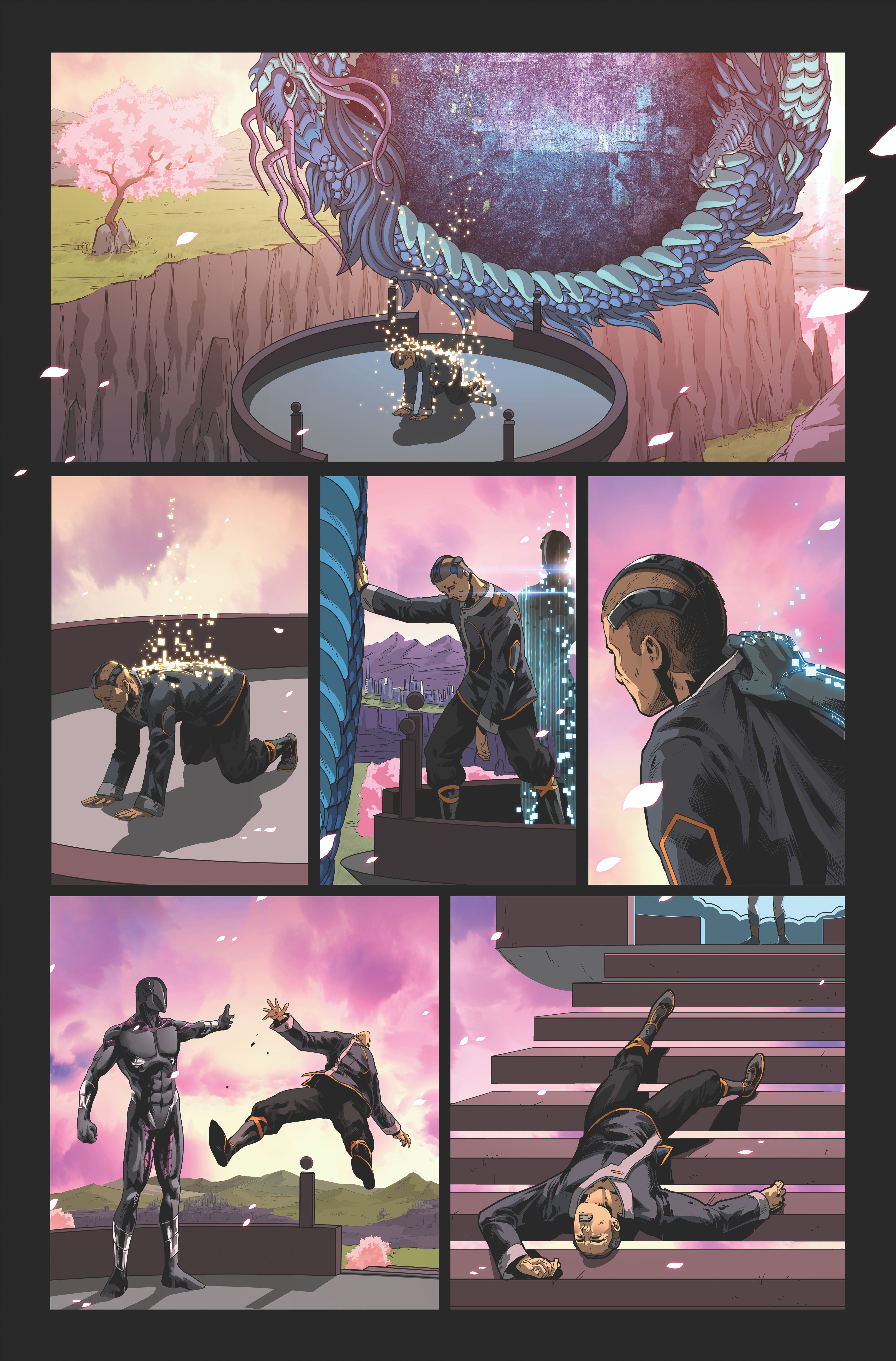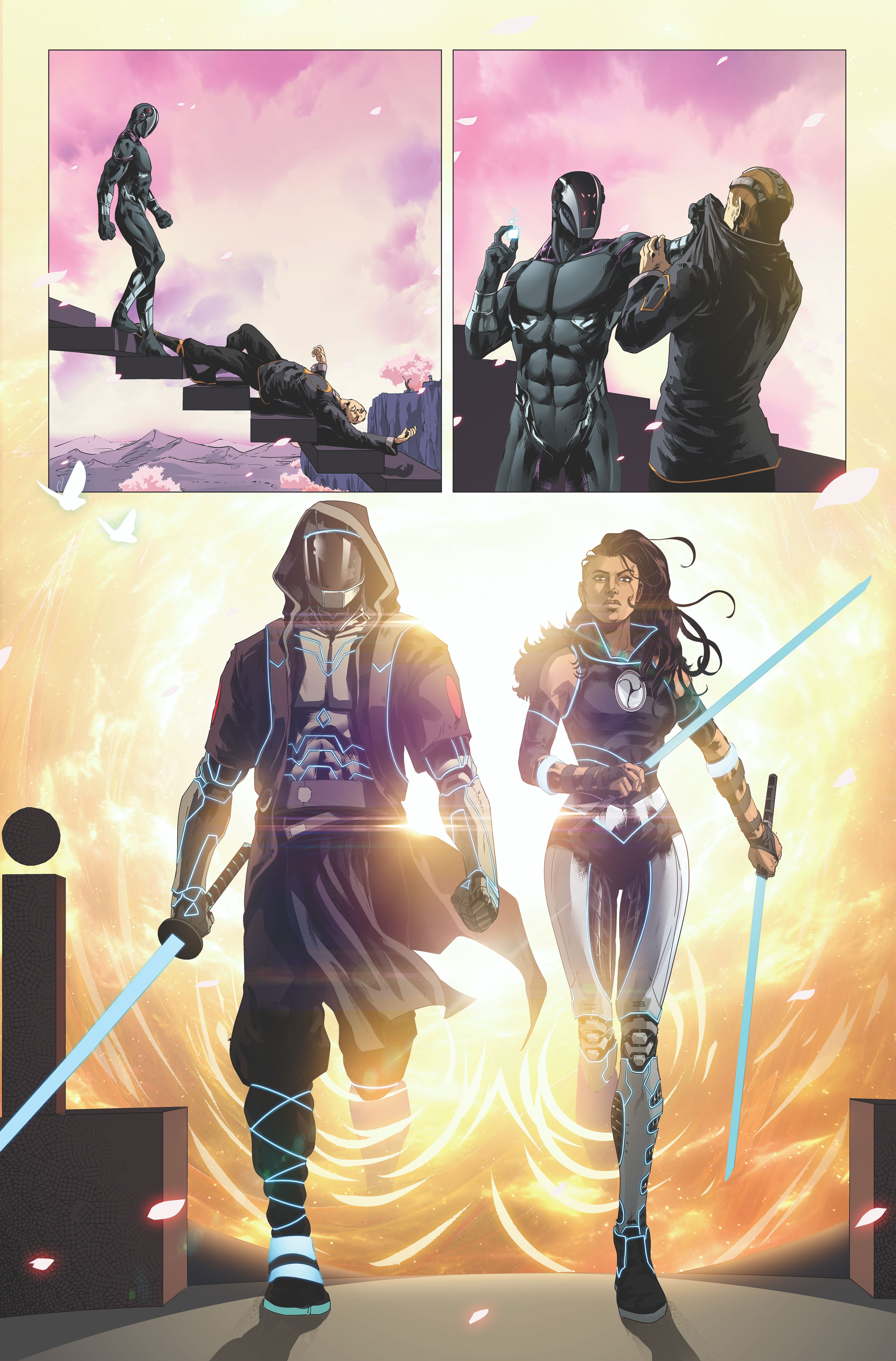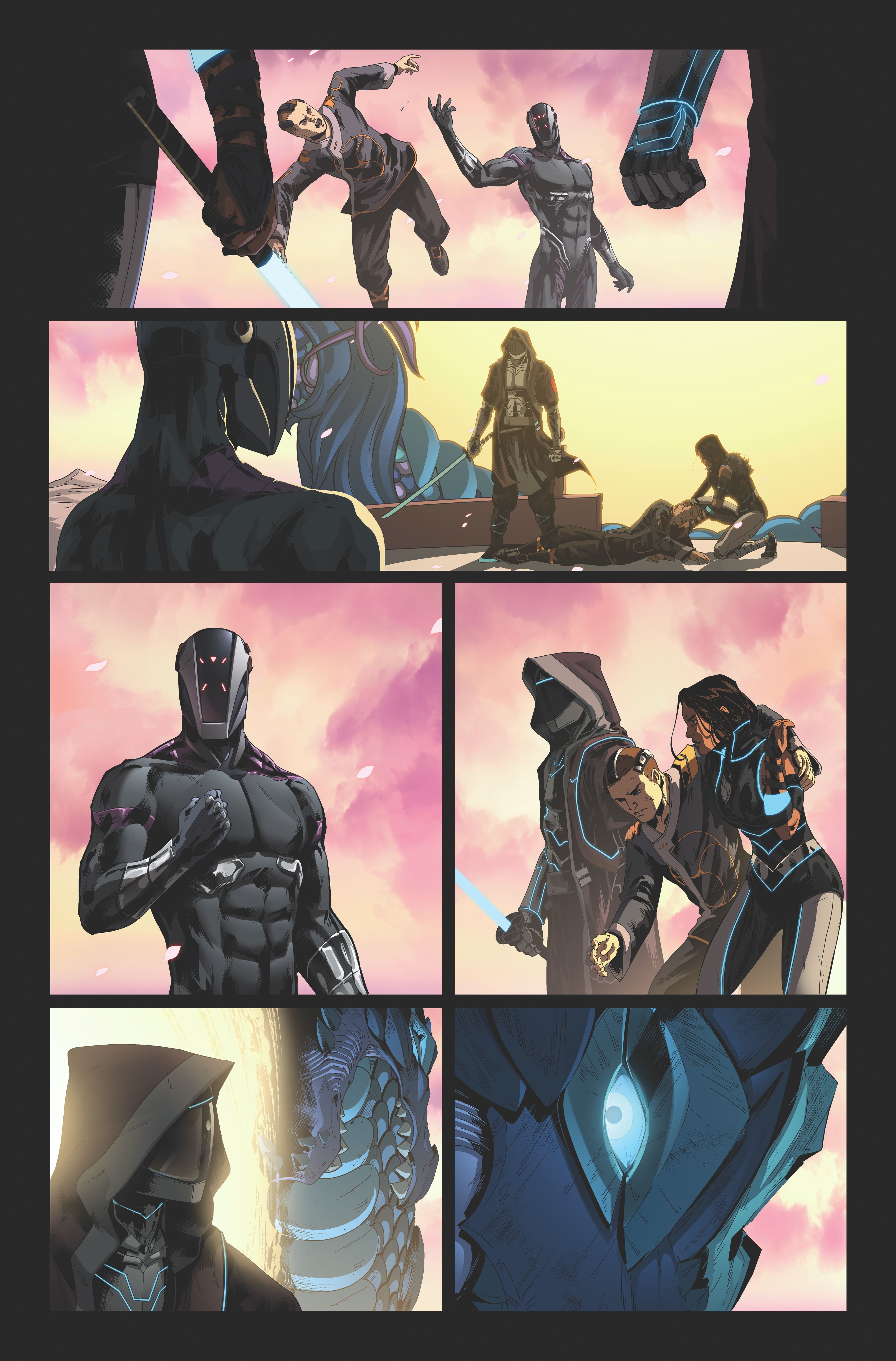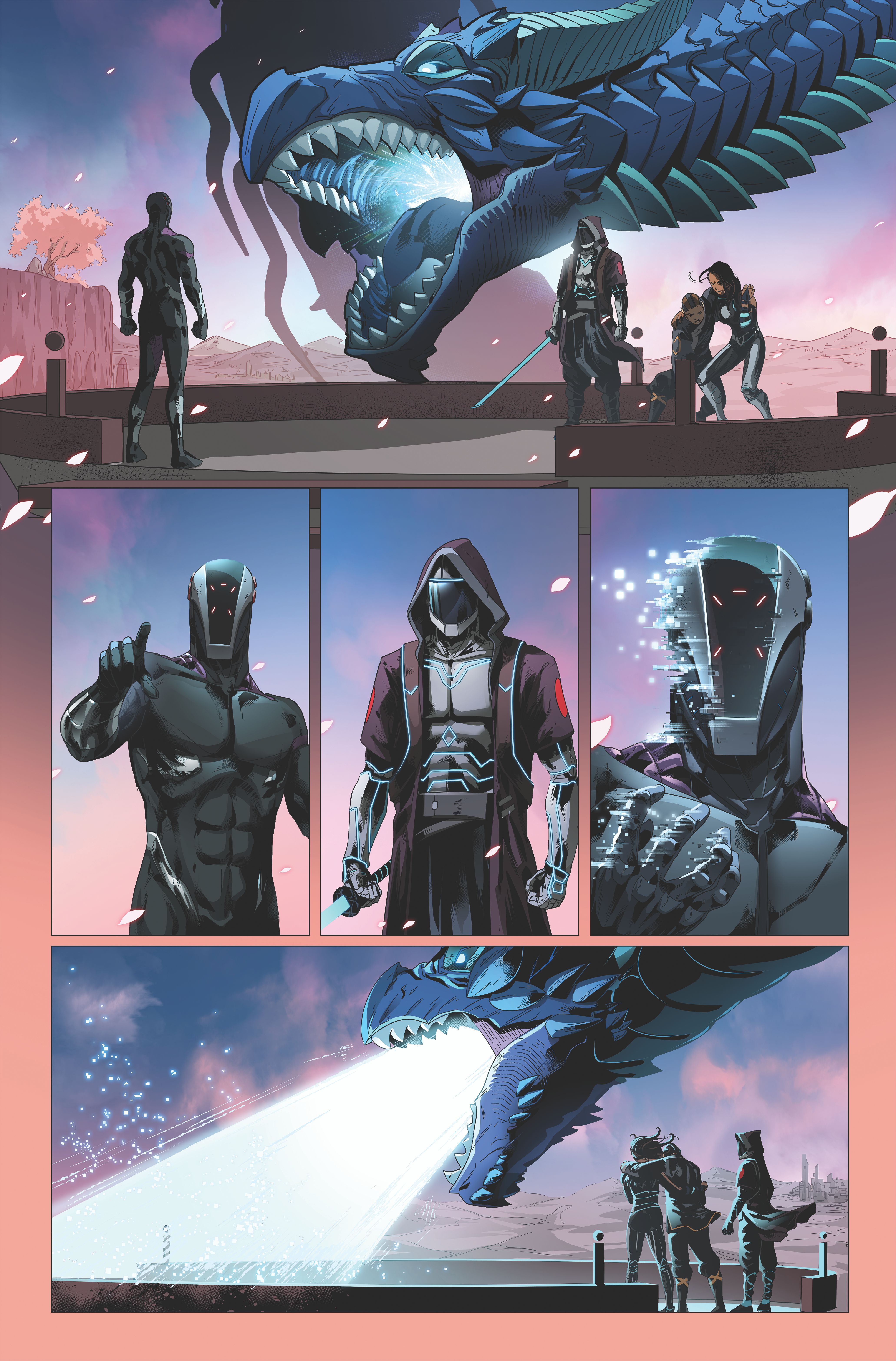Successful entrepreneur Tom Bilyeu launched the comic book publishing branch of his company Impact Theory last year, boasting all-star creative teams for its inaugural titles Neon Future and Hexagon. As the comic industry faces an uncertain future in the face of the ongoing COVID-19 pandemic, Impact Theory has announced it will switch a vertical-scroll, digital release format moving forward, instead of traditional print distribution -- a shift it had in place even before the global health crisis.
In an exclusive interview with CBR, Bilyeu discusses the rationale for the change in mass distribution, the future of Impact Theory and his hopes as the publisher moves deeper into its second year, along with an exclusive first look at next week's Hexagon #2, written by Michael Moreci and illustrated by Jheremy Raapack.
CBR: Tom, you're switching to digital release for single issues for Neon Future and Hexagon moving forward. How did this decision come about?
Tom Bilyeu: Well, I think -- given the words you just used -- our strategy is actually more aggressively digital than you’re thinking. This isn’t just a move to Comixology in the monthly format; this is a move to vertical-scroll. All of our past projects and future projects will be in the vertical-scroll format, so it’ll be more of a weekly model than a monthly model. When I first started in the industry, it was actually kind of funny. Comics distribution is just so ridiculously antiquated that originally I was like, “Get me on phone with Diamond, there’s got to be a better way!” So the more I talked with them, the more frustrating it became and I quickly realized that probably wasn’t going to be the ally I wanted it to be.
So, we started looking at what a digital-first strategy would look like. I tried to assess who was doing this right, so I took multiple trips to Japan and met with publishers there. I looked at doing a sort of anthology model -- not like a traditional anthology here, but like a manga anthology, like Shonen Jump or something like that -- but I wasn't sure that was going to play from a print perspective. Western comics doesn't do comics that are disposable, which is a key thing in Japan -- it's printed on cheap paper, it's black-and-white, it's meant to be thrown away; it's very different. So looking at the decline of sales in manga -- you've got One Piece, which has just dominated in sales and even its sales from its peak have been a quarter of what it used to be.
People are moving away from physical. Kids today are raised on technology, raised with phones -- and that led me to South Korea to look at what they're doing with manhwa. Not just the numbers with something like Webtoon, where you have something like 25 million likes on a single property, but looking at largest websites in the world: Amazon, Google -- #365 is a pirate anime and manga site and I just realized that when people here in the West say comic books are dead, it's not at all true for manga and manhwa on a vertical-scroll format. Seeing those staggering numbers of views -- with a Western comic, when you total it all up, it's something 4 million page views and manga is something like 19 million, if I'm remembering the numbers correctly. The level of difference is certainly accurate, even if the numbers are slightly off. So this is massive, but it's been demonetized -- so how do you thrive in a world where this has been demonetized? So our strategy has really been informed around that. Editor's Note: In the initial interview, Bilyeu misspoke, describing the site as #30. His team has since reached out to CBR, clarifying he meant to say #365.
With that in mind, along with the shift to vertical-scroll as opposed to Western-style digital comics, will you be distributing through your own platform or will you be partnering with existing apps?
Bilyeu: "Partnering" may be a word that's a bit misleading. We think of the apps like Webtoon or Tapas or even the pirate sites -- which, in most cases, are far bigger than either of those two -- we just see it like YouTube. The primary driver for us on these stories is awareness, so we see these as vehicles of awareness and, off the back of awareness, you can do some pretty extraordinary things. If you look at the top 25 media grossing properties of all time, only one of them generated the bulk of its revenue from print: One Piece. Every single other one, whether it's a video game or a book or a movie -- as much as it's cliched, they all generated their money from merchandising. As a fan and collector of comics, I wish it wasn't; I wish the money was in the book or the trade or even the periodical, but it's just not. So our goal for reaching a mass audience is through anime or live-action film or TV.
With this shift, can readers still expect to see print collections of story arcs?
Bilyeu: Our first two series, Neon Future and Hexagon, will have traditional trade paperback treatment. Everything else will be done in the vertical-scroll format. If something is really popular, we would collect that into a tankobon format -- not a traditional graphic novel format, but something you'd expect from a traditional manga book. We'll probably print that in color. So our focus is 85 percent aimed at kids aged 11-15 and I think they're far more familiar with the tankobon format than the graphic novel format. I also don't think graphic novels look too great on a shelf; they're too thin. Your omnibuses look great but, until you have 80 issues, it looks a little anemic. So the tankobon format, the decompressed storytelling, looks great on a shelf; it's more cinematic. That's really our focus.
We've kind of danced around the impact of COVID-19. You guys have launched a comics giveaway for readers. I was wondering if COVID-19 and its impact on the comic industry accelerated this shift in any way.
Bilyeu: So we already had a plan that all future comics beyond Neon Future and Hexagon were going to be developed in the vertical-scroll format, but COVID-19 made it so we literally hadn't even released one out of the five issues of Hexagon and we had a full, periodical monthly print strategy through Diamond for that. That was definitely interrupted by COVID-19 and the same thing with Volume 2 of Neon Future. That was going to be totally traditional: A monthly comic starting in May. Once Diamond hit the pause button, literally that day, I said, "OK, scrap all of that; it just seems so self-evident."
This is heartbreaking to me. I do not wish this in any way, shape or form, but this is the reality: You're going to lose a lot of comic shops and I don't even know if Diamond is going to come back from this. So that part of the market is just going to be savagely disrupted. On top of that, we're already aiming to not go into comic shops anyway, it just made sense to accelerate the new plan.
From a production standpoint, it's obviously a lot more intensive to put out a product every week. How has it been coordinating with writers and artists to make this distribution shift?
Bilyeu: It'll be interesting to see if we maintain our current thinking on this forever, but we aim to have as much done as possible of the first volume of something before we start releasing it weekly. Now, some things will be too speculative, where we're not sure if the IP is going to pop, so we'll want to try it and truly do a weekly model -- but we have a core of about five stories that we really believe in and we're going to develop the IP regardless, so those will go out once we have a full volume's worth. That way, we're not living under that pressure; it's so not fun and not great for the creative team and you do see manhwas go through repetitive cycles where they're basically trying to buy themselves time, so we want to avoid that.
We'll use that backlog of weeks, essentially, so if anything happens -- the artist gets sick or the script is not as good as it could be -- we'll be able to get it right before we release it.
Do you have any tentative time tables on when we can see this shift go live for the public?
Bilyeu: Neon Future and Hexagon will see a vertical-scroll release on Webtoon in about 45 days. And then our next project, which is written by Michael Moreci and currently called All Systems Go -- we'll see if that ends up being the final title or not -- that's expected in late summer or early fall.
You co-wrote all the inaugural Impact Theory books. Can readers expect you to team up with Michael Moreci again for All Systems Go?
Bilyeu: With All Systems Go, we share story credit like we did on Hexagon, but he wrote Hexagon and he will write All Systems Go. Writing... I love it so much but, man, it takes a long time. I've written the entire second volume of Neon Future and when I think about how much time it's taken me, it's unfortunately inescapable. My writing duties will be primarily on story and I'll edit some of the books, but that'll probably be the extent of it.
Is there anything you can share about potential multimedia adaptations of existing Impact Theory books?
Bilyeu: I can give you a teaser, but one of my favorite phrases is, "Many a slip between cup and lip," which is a British phrase that means unless it's out on the street, you never know. But we have begun what I'll say is early development/late-stage exploration with a very well-known Japanese anime company to do Neon Future. Whether it actually comes to fruition, especially now with COVID-19, I have no idea. So I don't want to overhype it and say, "Oh my God, it's coming out soon!" -- but it's at very late-stage discussions. You could consider it early-stage development, but there's no dotted-line signed or budget allocated, so we'll see.
As we move deeper into Impact Theory's second year and this digital shift, what are you hoping for readers and the publisher?
Bilyeu: We know how to build audience -- that’s really the driving force of Impact Theory’s success for the company and we’re pointing the same tools at Impact Theory’s comics. It’ll be understanding how to move up the ranks on Webtoon and understanding how to move up the ranks on the free sites that are pirating the stuff. We’ll be aggressively handing our content over. My theory on this is the same thing I say on my own personal Impact Theory page: “#StealThisContent.” I want people to be aware of this. Awareness is power, so driving awareness for a comic with no printing costs is easier. We’ve done very well by giving away our physical books, which comes not cheaply, so it’ll be exciting for us to do this all digitally now.
Written by Michael Moreci, Tom Bilyeu, Don Diablo and illustrated by Jheremy Raapack, Hexagon #2 goes on sale on April 22 through Impact Theory and Comixology. Check out an exclusive preview below.
Written by Bilyeu and Steve Aoki and illustrated by Neil Edwards and Jheremy Raapack, Neon Future, Vol. 2 will be released on May 22 from Impact Theory. Below is an exclusive sneak peek at the upcoming story.

